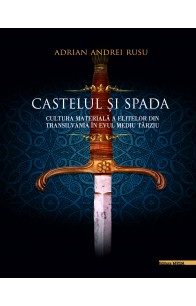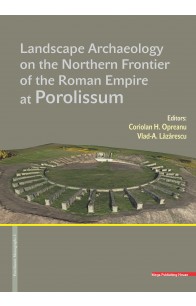Rezultate căutare pentru 'Andrei Valentin Georgescu'
Volumul este o sinteză a istoriografiei medievale care pune accentul pe cultura materială a elitelor din Transilvania în perioada Evului Mediu.
Această lucrare surprinde pentru început apariția elitelor și a centrelor de producție a bunurilor din Transilvania Evului Mediu, continuând mai apoi cu locurile unde își desfășurau activitatea elitele, ca în final să se concentreze pe averi și familiile de materiale, respectiv bunuri.
Autorul concluzionează ferm faptul că Evul Mediu „pus sub lupă nu este nici întunecat, nici misterios, nici murdar, nici fără zestre ori bunătăți.”
Adrian Andrei Rusu: „Dorința autorului ar fi aceea de a nu lăsa ca cele aici sintetizate să prindă mucegai și să se transforme într-un tratat. Ar vrea să fie mai ales deschideri de uși. Ele cer reluate, criticate ori dezvoltate pentru a-și îndeplini menirea pentru care au fost scrise.”
„The frontiers of the Roman Empire, over 5000 km long, stretch from the Atlantic coast of Scotland, along the Rhine and the Danube, also enclose the Banat region and Transylvania, then going down along the Oriental Carpathians to the Black Sea; from the southern coast of the Black Sea they continue towards the Near East until the Red Sea; then, in North Africa, they line the edge of the Sahara desert until the Atlantic coast of Morocco. Over this entire area, visible traces of fortifications, roads and settlements are still preserved, but numerous monuments still lay hidden underneath the earth. Despite the fact that the Roman frontiers crossed regions with different relief and climate, they constitute a whole in that they were designed to protect Roman territories. The research of these monuments and the preservation policy regarding them was and is unequal in the various presentday states on whose territory traces of the Roman frontier are to be found. Consequently, in the ‘80s of the 20th century, the idea of globally protecting the Roman frontiers, viewed as a unitary monument, was met. In 1987, Hadrian’s Wall in United Kingdom was declared a UNESCO monument. It was followed in 2005 by the German-Raetian sector, on which occasion the UNESCO committee decided to set up the ‘Frontiers of the Roman Empire’ site. (...)
This project through its complexity generated an interdisciplinary approach of the proposed subject stimulating such future attempts in the archaeological research field. By using the latest technical methods of non-destructive investigation the project did not damage the stratigraphy of the archaeological site obtaining instead a high amount of data otherwise time consuming judging from the archaeological excavations perspective contributing also to the preservation of the cultural heritage.” - Introduction







